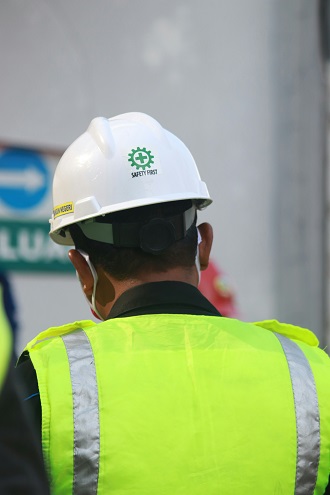
Originally Published by Cole Publishing
John Monroe understands the importance of setting goals.
In 2024, at age 60, he completed his sixth triathlon. Although he fell short of his six-hour goal, he posted a personal best swim time — despite having shoulder surgery in 2023. Monroe is already registered for his seventh triathlon in August 2025. And as a senior advisor at Violand Management Associates, Monroe also knows how to go about establishing business goals.
“If you want to accomplish something in your business, you’ve got to set goals,” he says.
Then, you need to tell others about those goals to help with follow-through, he adds.
“Most of the time when people come to us and they say, ‘Hey, I need help with my business,’ it’s really because they need accountability,” Monroe says. “They need somebody to hold them true to what they want to get done.”
Creating a roadmap
Monroe defines six qualities of a successful business owner as:
- Know your mission, vision and core values.
- Perform a company SWOT analysis.
- Define company objectives.
- Identify approaches and action items.
- Develop budgets.
- Assign responsibilities to your team.
These characteristics all come together in a business plan. A business plan sets a roadmap, describing how to structure, operate, and grow a business. While business plans are essential for startup companies, business plans are also vital for existing businesses, Monroe says. He suggests writing an annual business plan, outlining the major objectives to achieve within a year.
Writing a business plan begins with defining a high-level vision and mission statement. Vision and mission statements help business leaders determine why they’re doing what they’re doing. Why are you and your employees working for the company? A vision statement ideally looks 10 years down the road and describes an organization’s aspirations.
The company’s core values and company culture flow from the vision and mission statements.
“Honestly, core values are what millennials and the Gen Zer’s are looking for. What is your culture? What do you stand for?” Monroe says.
SWOT analysis
Next, Monroe recommends a SWOT analysis to evaluate an organization’s strengths, weaknesses, opportunities, and threats. How does the organization compare to the competition? One weakness might be response time. If the competition responds to a customer call within 30 minutes versus your 60 minutes, that might be a weakness to focus on.
“Why are we slow at answering calls? Are we servicing too big of an area? Do we not have enough people? What is it that’s making that a weakness?” Monroe says.
A SWOT analysis should provide some items to focus on in the next year or two.
“Fix some of your weaknesses, improve some of your strengths, or take advantage of the opportunities that are coming,” Monroe says.
Objectives and action items
From the SWOT analysis, businesses should develop a couple of major objectives.
“If it’s really overarching, and it’s very large, you can have lots of approaches and action items under it,” Monroe says.
He recommends limiting the number of business objectives you set.
“If you start setting four, five, and six major business objectives, you’re probably going to find yourself not completing your business plan,” he says.
An example of a business objective is to improve COGS (cost of goods sold) by implementing operational efficiencies, which look different for each company.
Once you set a couple of business objectives, you should develop approaches to meet those objectives. The list of approaches describes the change to take place over a month, quarter, or six months; whereas, a list of action items shows the daily and weekly tasks. Action items should include a due date and a person who’s assigned the task.
Smart budgeting
The fifth quality of a successful business owner involves budgeting, not just dollar-wise, but also time, equipment, and personnel.
“What are the things that we need to be putting in place? They involve capital. They involve technology. Marketing. People,” Monroe says.
Lastly, Monroe advises management teams to share their business plan with others in the organization.
“Let your company know that you have a plan: ‘This is where we’re going.’ And make sure the people that are involved in the plan recognize what piece they have in it,” Monroe says.
To track progress, he recommends regularly scheduled follow-up meetings, either weekly, biweekly or monthly.
Plan and adjust
Even with a clear business plan in place, obstacles can surface.
“Remember, you’re running a business, and the business is going to get in the way of doing some of the business plan actions,” Monroe says. “It doesn’t mean that we abandon the business plan. We may have to adjust the business plan. We may have to adjust the timeframe. We may have to adjust the people that we’ve devoted to it.”
Every fall, Violand Management Associates holds business planning retreats to guide business leaders as they set objectives and budgets for the coming year. Participants use Excel spreadsheets, QuickBooks, or online templates to create their business plans. Monroe says he has worked with clients who scribble ideas on a piece of paper and call it their business plan. That’s not enough, if an organization really wants to achieve its goals, he says
“We highly recommend that people use a standard template for their business plan,” Monroe says. “It needs some sort of organization.”
An effective business plan aligns with a company’s vision and mission, focuses on what’s critical, and identifies key performance indicators to measure progress. Although a business plan is a formal, written document, it’s also dynamic and adaptable as circumstances change.
Management teams often write business plans in the fall of the year to implement in January, but business plans can be written and adopted any time of year. A well-written business plan gives organizations a guide for problem-solving and decision-making. Business plans also give organizations a leg up on the competition. Experts estimate that companies that create a business plan grow 30% faster than those that don’t.
“Write the plan,” Monroe says. “Give yourself a chance to grow your business 30% faster than the rest of us.”
About the source: John Monroe, of Violand Management Associates, is an authority in sales, sales management, and entrepreneurship. He has worked for a Fortune 500 manufacturer and owned both a franchise business and a sales management consultancy. Monroe’s experience and coaching style, along with his ability to develop and motivate, help clients to exceed their goals in sales, cost control, and producing high-performing teams in any competitive environment. He earned his bachelor’s degree in economics from Clemson University.







